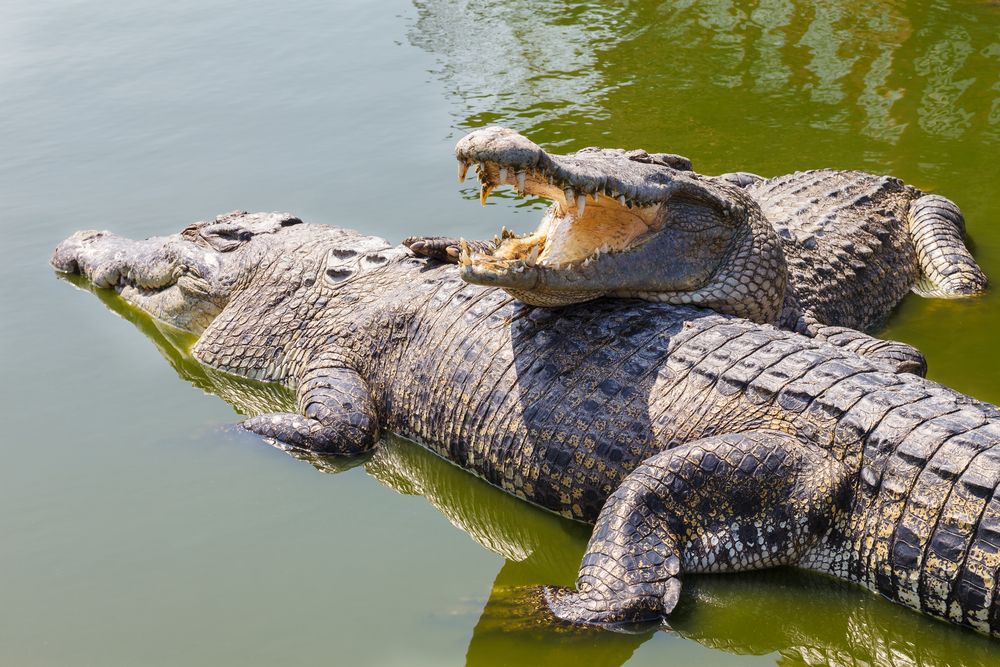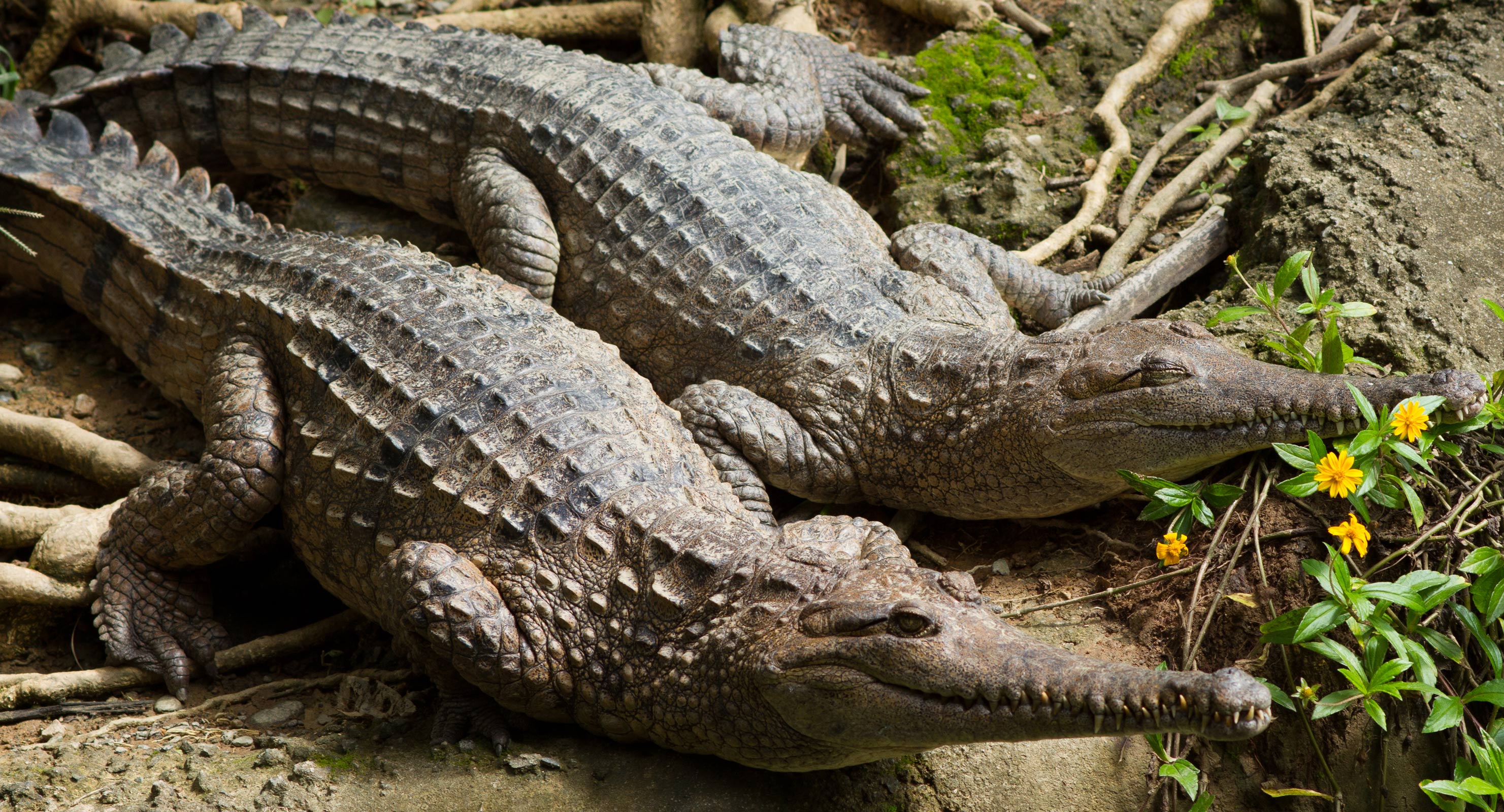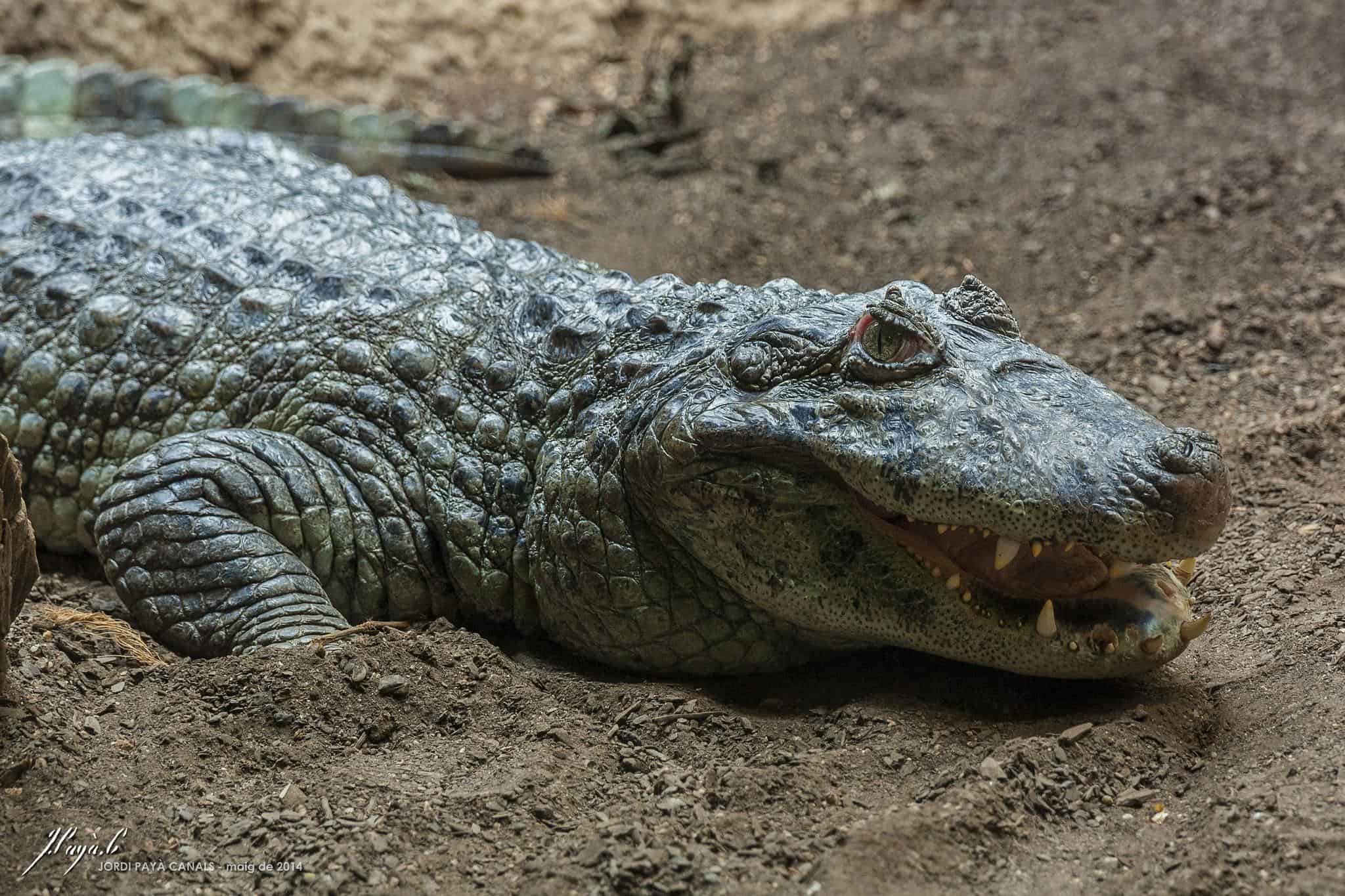Gando: The Ancient Crocodiles Of Iran's Southeast
Iran, a land often associated with ancient civilizations, vast deserts, and majestic mountains, holds a hidden marvel in its southeastern reaches: the elusive and ancient mugger crocodiles, locally known as 'gando'. These fascinating reptiles, a testament to Iran's rich biodiversity, are not merely creatures of legend but vital components of their unique freshwater ecosystems. Often overlooked in global wildlife discussions, the Iranian mugger crocodile represents a crucial western outpost of its species, facing unique challenges and playing an indispensable role in its habitat.
This article delves deep into the world of Iran's crocodiles, exploring their habitat, behavior, the profound threats they face, and the remarkable efforts being made to conserve them. We will uncover their ecological significance, their historical coexistence with local communities, and the urgent need for continued protection, highlighting their importance not just to Iran but to the broader global reptilian heritage.
Table of Contents
- Unveiling the Gando: Iran's Unique Crocodile Species
- Geographical Domain: Where Iran's Crocodiles Roam
- Ecological Role: Key Predator and Ecosystem Balancer
- Threats on the Horizon: Climate Change and Habitat Loss
- Conservation Efforts and Community Coexistence
- Iran's Reptilian Diversity: A Broader Context
- The Human Element and Awareness: Lessons from "In the Sea There Are Crocodiles"
- The Future of Iran's Crocodiles: A Call for Action
- Conclusion
Unveiling the Gando: Iran's Unique Crocodile Species
The mugger crocodile, scientifically known as Crocodylus palustris, holds a special place in Iran's natural heritage. Locally, it is affectionately and respectfully called 'gando' in Persian, a name that resonates deeply with the communities living alongside it. These prehistoric reptiles are carnivorous, typically measuring about 2.5 to 3 meters in length, though larger specimens have been observed. What distinguishes the mugger from many other crocodile species is its relatively broader snout, a characteristic adaptation for its freshwater marsh and riverine habitats.
While often perceived as formidable predators, the mugger crocodiles in Iran exhibit a different temperament compared to their more infamous relatives like the Nile or saltwater crocodiles. Unlike these species, mugger crocodiles are generally not known to attack humans as prey. Historical accounts and local knowledge suggest a long-standing, relatively peaceful coexistence between the Baluch people and these marsh crocodiles for centuries, with only a small quantity of clashes recorded. However, it is crucial to remember that they are still wild animals and can become aggressive if provoked or if they feel threatened, especially when protecting their nests or young. This makes the mugger or marsh crocodile Iran's most notable dangerous aquatic animal, underscoring the need for respectful distance and awareness.
Despite their imposing presence, the mugger crocodile is described as a very intelligent and shy species. This inherent shyness makes them particularly difficult to observe directly in their natural environment. Consequently, census teams often face challenges in accurately counting their numbers. Recognizing this difficulty, experts estimate the actual number of these elusive creatures in the region to be approximately twice the number observed, suggesting a population of around 400 crocodiles. This estimation highlights the hidden nature of these reptiles and the ongoing efforts to understand their true population dynamics.
Geographical Domain: Where Iran's Crocodiles Roam
The mugger crocodile's presence in Iran is geographically significant, representing the westernmost population of mugger crocodiles globally. This makes them a crucial biogeographical link, as they are the last crocodilian species encountered before reaching the Nile crocodile (Crocodylus niloticus) in Africa. Interestingly, there is a distinct "no man's land" with no crocodilian species stretching from Iran all the way to Egypt, where Nile crocodiles are currently found in Lake Nasser, the vast reservoir created by the Aswan Dam.
Within Iran, the mugger crocodile is predominantly found in the southeastern provinces of Sistan and Baluchestan. This region, characterized by its warm freshwater habitats, is the native home of the 'gando'. The main habitat of the marsh crocodile is concentrated in the furthermost areas of southeast Iran, extending from the Sarbaz River and Bahoukalat up to the Oman Sea. Their presence can also be noted in specific areas of Chabahar, Sarbaz, and Nikshahr counties. This critical area is officially recognized and protected as the Gando Protected Area, specifically around Bahoukalat, a testament to its ecological importance.
The very region itself takes its name, in part, from this iconic crocodile, underscoring its deep cultural and ecological roots in the local landscape. Bahu Kalat village in Sistan and Baluchestan province has, in fact, turned into a tourist attraction precisely because of its rare species of crocodiles found in Iran, drawing visitors interested in witnessing these unique reptiles in their natural habitat.
Ecological Role: Key Predator and Ecosystem Balancer
The Persian mugger crocodile is not just a fascinating creature; it is a vital component of the Iranian wildlife ecosystem. Thriving in the warm freshwater habitats of Iran, this species, known for its broad snout and powerful jaws, serves as a key predator. Its role at the top of the aquatic food chain is crucial for maintaining the delicate balance of its environment. By preying on fish, amphibians, reptiles, and even small mammals that venture too close to the water, the gando helps regulate populations, preventing overpopulation of certain species and ensuring the health and stability of the aquatic ecosystem.
Their presence is an indicator of a healthy freshwater system. A thriving population of mugger crocodiles suggests that the water quality, prey availability, and habitat structure are sufficient to support a complex food web. Without these apex predators, the ecosystem could become imbalanced, leading to cascading effects that might harm other species and ultimately diminish the biodiversity of these unique Iranian wetlands and rivers. Therefore, the conservation of Iran's crocodiles is not merely about saving a single species but about preserving the integrity of an entire ecological community.
Threats on the Horizon: Climate Change and Habitat Loss
Despite their resilience and ecological importance, Iran's crocodiles face an array of significant threats, primarily driven by environmental changes and human activities. The delicate balance of their existence is increasingly being disrupted, putting their future in jeopardy.
The Impact of Flooding
One of the most immediate and devastating threats to the mugger crocodile population comes from extreme weather events. Recent reports from Iranian authorities have warned that crocodiles are being forced from their natural habitats as floods devastate parts of the country’s southeast. The southeastern Iranian province of Sistan and Baluchestan, the primary home of the gando, has been recently hit by severe flooding, causing widespread damage to the region. Such extensive flooding not only destroys their natural nesting sites and alters river courses but also displaces the crocodiles, pushing them into areas where they might come into conflict with human populations. This displacement can lead to increased stress for the animals, making them more vulnerable to injury, disease, or retaliatory actions from humans.
Climate Change and Gender Determination
Beyond immediate flood impacts, climate change poses a major, long-term threat to the rare crocodile of Iran. Asghar Mobaraki, a member of the crocodile group of the International Union for Conservation of Nature (IUCN), has highlighted a critical aspect of this threat: the animal's gender is related to nest temperature, not genetics. This phenomenon, known as Temperature-Dependent Sex Determination (TSD), means that the ambient temperature during a crucial period of egg incubation determines whether the hatchlings will be male or female. Rising global temperatures, a direct consequence of climate change, can skew the sex ratio of crocodile populations, potentially leading to an overwhelming majority of one gender. An imbalanced sex ratio can severely impact breeding success and genetic diversity, ultimately threatening the long-term viability of the species. If temperatures consistently favor the production of females or males, the population could face a severe bottleneck, making recovery incredibly challenging.
Human-Wildlife Conflict
The encroachment of human development into natural habitats also exacerbates the challenges faced by Iran's crocodiles. As infrastructure expands, the likelihood of human-wildlife conflict increases. Tragic incidents, such as the deaths of three road construction workers, underscore the potential dangers when human activity intersects with wildlife territories. While mugger crocodiles are generally less aggressive than other species, habitat destruction and displacement can lead to unexpected encounters, posing risks to both humans and animals. This highlights the critical need for careful planning and mitigation strategies in development projects within or near crocodile habitats to minimize such unfortunate incidents and promote peaceful coexistence.
Conservation Efforts and Community Coexistence
Despite the myriad threats, there are significant efforts underway to protect Iran's crocodiles, often intertwined with the long-standing traditions of local communities. The story of the gando is not just one of vulnerability but also of resilience and the potential for harmonious coexistence.
The Baluch people, indigenous to the region where these crocodiles thrive, have been living peacefully alongside marsh crocodiles for centuries. This historical relationship is a testament to their understanding of the animals and their environment, with only a small quantity of clashes reported over generations. This deep-rooted cultural acceptance and respect for wildlife are invaluable assets in conservation efforts. Local communities often possess traditional knowledge that is crucial for understanding the behavior and ecological needs of the crocodiles, making them indispensable partners in protection initiatives.
Furthermore, the mugger crocodile itself has become an unexpected tourist attraction, drawing attention and resources towards its conservation. Bahu Kalat village in Sistan and Baluchestan province, for instance, has gained recognition precisely for its rare crocodile species, attracting visitors eager to witness these unique reptiles. This nascent ecotourism provides an economic incentive for local communities to protect the crocodiles and their habitats, demonstrating that wildlife conservation can go hand-in-hand with sustainable development. The designation of the Gando Protected Area (Bahoukalat) is a formal recognition of the importance of these habitats and provides a framework for their legal protection and management.
These efforts, combining traditional knowledge, community engagement, and formal protection, are crucial for the long-term survival of Iran's crocodiles. They highlight a model where conservation is not imposed but emerges from a shared understanding and mutual benefit between humans and wildlife.
Iran's Reptilian Diversity: A Broader Context
To fully appreciate the significance of Iran's crocodiles, it's essential to place them within the broader context of the country's remarkable reptilian diversity. Iran is a biodiversity hotspot for reptiles, boasting at least 243 known species. This rich tapestry of reptilian life includes a wide array of turtles, lizards, and snakes, in addition to its single, unique crocodile species.
Specifically, Iran's wildlife reptiles include 77 species of snakes, ranging from harmless garden snakes to venomous vipers; 136 species of lizards, showcasing an incredible variety of forms and adaptations; and 10 species of turtles, inhabiting both marine and freshwater environments. Amidst this impressive diversity, the mugger crocodile stands out as the sole crocodilian representative, making its presence and conservation all the more vital. The Persian mugger crocodile is indeed a unique reptile among Iran's animals, representing an ancient lineage and a specialized ecological niche that contributes significantly to the country's overall natural heritage.
This rich reptilian fauna underscores Iran's importance as a global biodiversity reservoir. The conservation of the gando, therefore, is not an isolated endeavor but an integral part of a larger commitment to preserving the entirety of Iran's unique and valuable wildlife, ensuring that future generations can continue to marvel at the country's natural wonders.
The Human Element and Awareness: Lessons from "In the Sea There Are Crocodiles"
While the focus of this article is explicitly on the biological and ecological aspects of Iran's crocodiles, it's worth touching upon how narratives, even those seemingly unrelated, can resonate with themes of survival, danger, and resilience—qualities often associated with these ancient reptiles. The book "In the Sea There Are Crocodiles" by Fabio Geda, which tells the extraordinary true story of Enaiatollah Akbari, a young Afghan boy, offers a powerful metaphorical lens through which to view the struggles of both humans and wildlife in challenging environments.
In Geda's poignant narrative, Enaiatollah faces incredible hardship when his mother leaves him alone in Pakistan, forcing him to embark on a perilous journey across continents. The phrase "In the sea there are crocodiles" becomes a recurring motif, symbolizing the immense dangers, the unknown, and the life-threatening obstacles he encounters. While the literal "crocodiles" in the sea are a figment of his fear and imagination, the metaphor powerfully conveys the harsh realities of survival. This resonates with the challenges faced by Iran's crocodiles. They, too, navigate a "sea" of environmental threats—floods, habitat loss, and climate change—that force them into precarious situations, much like Enaiatollah's journey through an unforgiving world.
The book, therefore, serves as a poignant reminder of vulnerability and resilience, not just for humans but for all living creatures facing existential threats. It underscores the importance of awareness and empathy towards those struggling to survive, whether they are displaced individuals or endangered species. By understanding the profound challenges faced by both, we can foster a greater sense of responsibility and urgency in conservation efforts, recognizing that the "crocodiles" in the "sea" of life's adversities require our attention and protection.
The Future of Iran's Crocodiles: A Call for Action
The future of Iran's crocodiles, the magnificent gandos, hangs in a delicate balance. Their survival is intrinsically linked to the health of the freshwater ecosystems in Sistan and Baluchestan and the broader environmental policies of the nation. The threats posed by climate change, particularly the escalating frequency of floods and the temperature-dependent sex determination, demand urgent and strategic interventions. Protecting their habitats from further degradation due to human encroachment and development is paramount.
Continued scientific research is essential to better understand their population dynamics, behavioral patterns, and the specific impacts of environmental stressors. This data will inform more effective conservation strategies. Furthermore, strengthening the Gando Protected Area and enforcing protective laws are crucial steps. Beyond formal protection, fostering and enhancing the peaceful coexistence between local communities and the crocodiles, building upon centuries of shared history, is vital. Empowering local people through ecotourism initiatives and involving them directly in conservation efforts can create a sustainable model for the future.
The mugger crocodile is not just a reptile; it is a symbol of Iran's unique natural heritage, a key player in its aquatic ecosystems, and a testament to the country's rich biodiversity. Its continued existence is a responsibility that extends beyond national borders, contributing to global efforts in preserving Earth's precious wildlife.
Conclusion
The story of Iran's crocodiles, the ancient and enigmatic gandos, is a compelling narrative of survival, adaptation, and the ongoing struggle against modern environmental challenges. From their unique position as the westernmost population of mugger crocodiles to their crucial role as apex predators in Iran's southeastern freshwater habitats, these reptiles are an invaluable part of the nation's natural legacy. Despite their inherent shyness and the relative peace they maintain with local communities, they face formidable threats, particularly from the devastating impacts of climate change and habitat destruction.
However, the resilience of these creatures, coupled with the dedicated efforts of conservationists and the long-standing harmonious relationship with the Baluch people, offers a beacon of hope. The gando's role as a tourist attraction and the existence of protected areas underscore the growing recognition of their importance. As we look to the future, it is imperative that we continue to support and expand conservation initiatives, mitigate the effects of climate change, and foster a deeper understanding and appreciation for these magnificent creatures. By doing so, we can ensure that the ancient call of the mugger crocodile continues to echo through the marshes and rivers of southeastern Iran for generations to come. Share this article to spread awareness about these incredible animals, or explore more about Iran's diverse wildlife on our site.
- Judge Ross Wife
- Brennan Elliott Wife Cancer
- Aishah Sofey Leaked
- How Did Bloodhound Lil Jeff Die
- Sahara Rose Ex Husband

Crocodiles: Facts and photos of some of the toothiest reptiles | Live

Freshwater crocodiles | Australia’s Defining Moments Digital Classroom

Crocodile Animal Facts | Crocodylus acutus | AZ Animals